Urology |
D11
|
Laparoscopic Surgery
Laparoscopic SurgeryLaparoscopic or keyhole surgery is used extensively at the RUH. Almost every abdominal operation has the potential for keyhole surgery if the circumstances are right. Surgeons at the RUH have a wealth of experience in this area of work and several were involved in pioneering the development of laparoscopic surgery almost 20 years ago. The trust has hosted a national conference on keyhole surgery and runs teaching courses for young surgeons in a dedicated surgical skills laboratory on the site. The range of keyhole operations we offer demonstrates that we have both the knowledge and skills to deal with the most complex situations. Principles of Laparoscopic SurgeryThe key principle of laparoscopic surgery is the reduction of the surgical wound for any given operation to the smallest possible size. This is achieved by using a telescope and TV camera to view the abdominal cavity so the surgeon can see the organs and tissues. Several tiny incisions may be made so that surgical instruments can be introduced. These techniques allow a faster recovery, as there are fewer disturbances of healthy organs in the abdomen and less discomfort from the surgical scar. There is also a greatly enhanced cosmetic appearance afterwards, which may not be important to all our patients but demonstrates our commitment to providing the best possible care. Pros and Cons of Laparoscopic SurgeryA direct comparison between a conventional open approach and a keyhole approach to any given operation almost always demonstrates an advantage for keyhole surgery – particularly reduced pain, improved speed of recovery and less scarring. However, laparoscopic surgery is often more complex and may demand more from the surgeon and the team and does carry some risks. What are the risks?The surgeon uses CO2 gas to fill the abdominal cavity to create a safe working space inside the patient’s tummy. It is still a tight space, however, and occasionally normal tissues can be accidentally injured during a keyhole operation. This is rare but can occur in one in every 500 operations, although in most cases the problem is easily correctable. The risk is greater in those who have had previous abdominal surgery where internal scarring can reduce the working space in the tummy still further. New developmentsWe are constantly updating our knowledge, techniques and equipment. We are using the latest technology, including different ways of controlling bleeding during surgery and techniques to the further reduce the already small number of scars. Operations using Laparoscopic techniquesLaparoscopic cholecystectomy
|
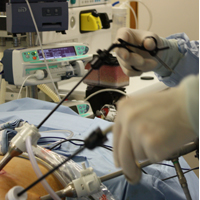
|
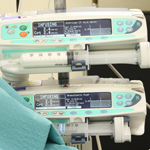
|
|
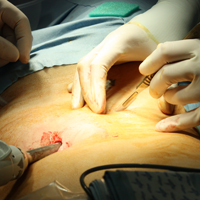 |
|
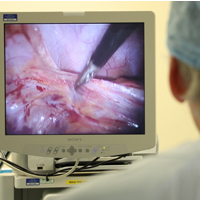 |
|
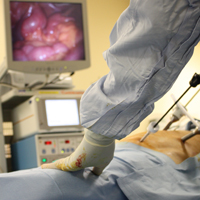 |
|
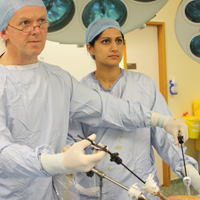 |
|
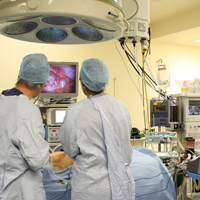 |
|
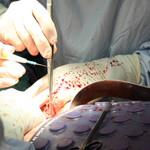 |
|
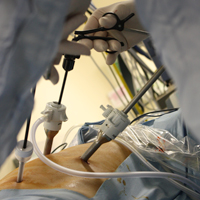 |
|
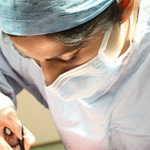 |


